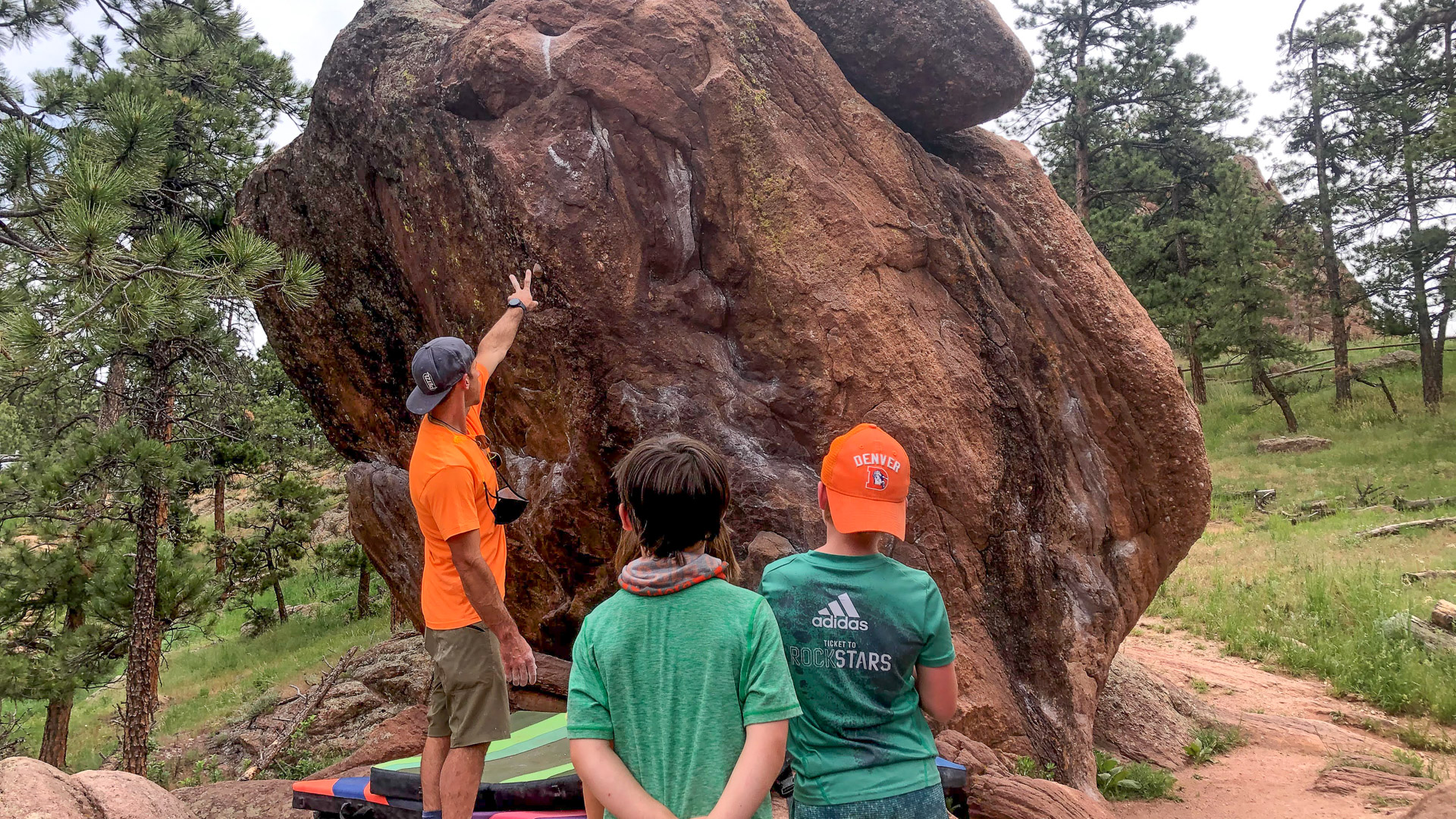
There are many reasons that people get hooked on the sport of bouldering. Not only is it a great workout, it challenges both the body and the mind.
It teaches perseverance and seeing things in new ways. It also creates a great opportunity to meet new friends while enjoying the outdoors. These seven tips will help you get started if you are new to bouldering in the outdoors.

Go gear up
To have a successful bouldering session, you need to have the right gear. Climbing shoes are essential for the grip. They also give climbers the ability to use their toes for standing on small holds and the ability to use heels for heel hooks. Hands will get sweaty while reaching for that next hold, so don’t forget to pack chalk. A chalk bag that straps around the waist and keeps chalk within reach is also recommended.
The most important gear to have is at least one, but preferably two, crash pads. These pads are going to be your safety line for when you miss a move. With two pads, you can be sure that rocks and any other environmental dangers can be covered up while you try to complete a bouldering problem.

Location, location, location
Even if you are an experienced indoor climber, the first few times bouldering outdoors are going to be a learning experience. The obvious routes and holds in an indoor gym disappear when you’re looking at a slab of rock. For your first few outdoor sessions, pick something short and easy. Staying close to home is also a recommended tactic.
With so many different climbing areas, take time to research where you want to go. Use resources from Facebook groups, guidebooks or apps/websites like mountainproject.com. “Some areas may have a long approach, while other climbing areas are within feet of the parking area,” said Claire Gordon, team ABC program manager. “Most climbing areas have a guidebook which will give you information on where to park, how to hike in and what each route is,” she added.

Check out restrictions before climbing
Every bouldering area will have its own restrictions based on numerous factors, including time of year, weather and even construction. “A lot of climbing areas can have seasonal closures, so make sure you are aware of them,” said Gordon. These closures are typically in place to protect animals and plant life. They come with hefty fines if broken.
Private property that was once open for access may no longer be open. “Make sure that you do not need to trespass in order to get to where you plan to climb. Just because someone has done a climb before does not mean that it is legal for you to do so,” said Gordon.

Have a spotter
It’s important to have someone spotting you when you are bouldering to be sure you leave your session injury-free. Not only can a spotter give you information to help you if you are stuck on a move, they also are your eyes on the ground.
The spotter’s main job is to follow the climber’s progress and move the pads to ensure that the pads are in the right spot if a fall were to occur. “The spotter’s job is to make sure the climber lands on the pad. It is NOT their job to catch the climber,” Gordon emphasized.

Pad placement
If you only have a few pads, make sure you are placing the pads over any obviously protruding rocks or hazards that are in the fall zone. “Carefully consider where you are most likely to fall,” stated Gordon. Your spotter should move the pads along as you climb.
Gaps should be covered to minimize any twisting injuries like a twisted ankle. You may want to stack several pads to create a level platform and cover gaps. If the boulder is high, you will want to go with a greater depth of pads by stacking them on top of each other.

Route reading
The obvious routes and holds are gone, so you must pay attention.
Holds might not always have chalk on them, and there are many different ways to do a climb outside, according to Gordon. “Be open to grabbing a hold that has no chalk on it. It just might be the best way for you to get to the top.”

Don’t get discouraged
Outdoor climbing is very different from indoor climbing. It will challenge your mind and body in new ways. The types of climbs, grades and even kind of rock you will climb will likely vary from climbing area to climbing area. “Don’t let this get you down,” encouraged Gordon. “Keep giving outdoor climbing a chance!”





